This page includes resources about the planning, design, and engineering for traffic calming and on-street measures.
Table of Contents
Bike Lanes
Benefits of Bike Lanes This is an overview and partial list of benefits of bike lanes to drivers, bicyclists, and pedestrians from Prescott Alternative Transportation
This is an overview and partial list of benefits of bike lanes to drivers, bicyclists, and pedestrians from Prescott Alternative Transportation
Advantages of Bike Lanes (PDF)
Benefits of Bike Lanes (PDF)
Bike Lane (Protected) Business Impact Study
 This 2011 study from Stantec Consulting, created for the Vancouver Economic Development Commission, lays out the economic benefits of two protected cycletracks for businesses in downtown Vancouver. According to the authors: "This is the first-ever such study in North America, and perhaps the world, that has focused on identifying the local business impacts of separated bike lanes. Not only has the study provided an estimate of the business impact, it has developed recommendations to mitigate the negative impacts to the business community and detailed the lessons learned in order to guide future studies of this nature."
This 2011 study from Stantec Consulting, created for the Vancouver Economic Development Commission, lays out the economic benefits of two protected cycletracks for businesses in downtown Vancouver. According to the authors: "This is the first-ever such study in North America, and perhaps the world, that has focused on identifying the local business impacts of separated bike lanes. Not only has the study provided an estimate of the business impact, it has developed recommendations to mitigate the negative impacts to the business community and detailed the lessons learned in order to guide future studies of this nature."
Business Impact Study Report — Downtown Separated Bicycle Lanes (PDF)
Bike Lane (Protected) Online Resource Site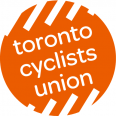 On June 1, 2011, the Toronto Cyclists Union launched a comprehensive and user-friendly resource website that's a one-stop shop for key statistics, studies and informed suggestions on protected bike lanes. The site includes: What are protected bike lanes and why are they an asset to active transportation; how protected bike lanes increase bicycle safety and ridership; sharing the road with transit, pedestrians and drivers; dealing with intersections and driveways; and, of course, the proposed network of protected bike lanes in Toronto.
On June 1, 2011, the Toronto Cyclists Union launched a comprehensive and user-friendly resource website that's a one-stop shop for key statistics, studies and informed suggestions on protected bike lanes. The site includes: What are protected bike lanes and why are they an asset to active transportation; how protected bike lanes increase bicycle safety and ridership; sharing the road with transit, pedestrians and drivers; dealing with intersections and driveways; and, of course, the proposed network of protected bike lanes in Toronto.
Easy Riding: Low-Stress Bike Lanes for Toronto (URL)
Bike Lane Business Brochure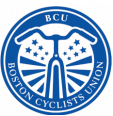 Based on the work of the Toronto Coalition for Active Transportation, the Boston Cyclists Union created this flyer in early 2010 to successfully convince businesses in Jamaica Plain to support a bike lane. The document was used again in early 2011 in Charlestown as part of a campaign to install a bike lane on Main Street.
Based on the work of the Toronto Coalition for Active Transportation, the Boston Cyclists Union created this flyer in early 2010 to successfully convince businesses in Jamaica Plain to support a bike lane. The document was used again in early 2011 in Charlestown as part of a campaign to install a bike lane on Main Street.
Bike Lane Business Brochure (PDF)
Bike Lanes, On-Street Parking and Business: A Study of Bloor Street in Toronto's Annex Neighborhood This study from the Clean Air Partnership analyzes the impact of bike lanes on businesses in a Toronto neighborhood. Included in the study are results from surveyed opinions of merchants and patrons in the area. This resource may be useful to those who are interested in supporting proposed bike lanes in commercial areas.
This study from the Clean Air Partnership analyzes the impact of bike lanes on businesses in a Toronto neighborhood. Included in the study are results from surveyed opinions of merchants and patrons in the area. This resource may be useful to those who are interested in supporting proposed bike lanes in commercial areas.
Bike Lanes, On-Street Parking and Business (PDF, 1.6 MB)
Interim Approval for Optional Use of Green Colored Pavement for Bike Lanes In April 2011 memorandum from the Federal Highway Administration (FHWA) backs the use of green bike lanes, stating: "Positive operational effects have been noted in experiments, such as bicyclists positioning themselves more accurately as they travel across intersections and through conflict areas, and no notable negative operational effects have been observed. The research has also shown that bicyclists and motorists both have a positive impression of the effect of the green colored pavement, with bicyclists saying that they feel safer when the green colored pavement is present, and motorists saying that the green colored pavement gives them an increased awareness that bicyclists might be present and where those bicyclists are likely to be positioned within the traveled way."
In April 2011 memorandum from the Federal Highway Administration (FHWA) backs the use of green bike lanes, stating: "Positive operational effects have been noted in experiments, such as bicyclists positioning themselves more accurately as they travel across intersections and through conflict areas, and no notable negative operational effects have been observed. The research has also shown that bicyclists and motorists both have a positive impression of the effect of the green colored pavement, with bicyclists saying that they feel safer when the green colored pavement is present, and motorists saying that the green colored pavement gives them an increased awareness that bicyclists might be present and where those bicyclists are likely to be positioned within the traveled way."
Interim Approval for Optional Use of Green Colored Pavement for Bike Lanes (URL)
Bridge Access
Bridge Advocacy
 Transportation Alternative's current campaigns focus largely on redesigning the on-street approaches to major bridges to ensure safe access for the thousands of cyclists who use them daily.
Transportation Alternative's current campaigns focus largely on redesigning the on-street approaches to major bridges to ensure safe access for the thousands of cyclists who use them daily.
Bridge Access Advocacy in NYC (URL)
Resource title
San Francisco Bicycle Coalition has engaged in regional campaigns with the bike access on the Bay Bridge and the Golden Gate Bridge.
Bridge the Gap! Bridge Access Campaign (URL)
Learn from the Bridge Access Report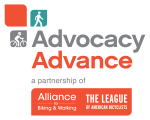 On December 2010, the Alliance hosted a Mutual Aid Call focused on the lessons learned and data compiled in the Advocacy Advance Report, "Bridging the Gaps in Bicycling Networks: An Advocate's Guide to Getting Bikes on Bridges." Here's a handy tip sheet with ideas and recommendations from the call panelists.
On December 2010, the Alliance hosted a Mutual Aid Call focused on the lessons learned and data compiled in the Advocacy Advance Report, "Bridging the Gaps in Bicycling Networks: An Advocate's Guide to Getting Bikes on Bridges." Here's a handy tip sheet with ideas and recommendations from the call panelists.
Bridge Access Tip Sheet (PDF)
Engineering/ Signals
Manual of Uniform Traffic Control Devices
This 2009 report from the Federal Highway Administration (FHWA) defines the standards used by road managers nationwide to install and maintain traffic control devices on all public streets, highways, bikeways, and private roads open to public traffic.
Manual of Uniform Traffic Control Devices (URL)
Signalized Intersection Enhancements that Benefit Pedestrians America Walks' guide to signals walks through some ways to increase the visibility of pedestrians and to alter roadways to be safer for pedestrians to cross. It includes descriptions and pictures of each method discussed.
America Walks' guide to signals walks through some ways to increase the visibility of pedestrians and to alter roadways to be safer for pedestrians to cross. It includes descriptions and pictures of each method discussed.
America Walks Signalized Intersection Enhancements that Benefit Pedestrians (PDF)
Towards a Safe Urban Speed Limit Report This 1996 report by the Bicycle Federation of Australia discusses the effects of urban speed limits.
This 1996 report by the Bicycle Federation of Australia discusses the effects of urban speed limits.
Towards a Safe Urban Speed Limit Report (PDF, 449 KB)
Parking
Guaranteed Parking – Guaranteed Driving October 2008 report posted on Transportation Alternatives website. According to the report, "We compare the neighborhoods of Jackson Heights, Queens with Park Slope in Brooklyn. We show that the presence of guaranteed, off-street, parking at home results in a larger share of car owners choosing to drive to work. New York City zoning regulations require new residential buildings to include off-street parking for some or all residents thus contributing to increases in driving to work. The findings in this report strongly suggest that New York City zoning regulations promote driving to work, even when a viable transit option exists."
October 2008 report posted on Transportation Alternatives website. According to the report, "We compare the neighborhoods of Jackson Heights, Queens with Park Slope in Brooklyn. We show that the presence of guaranteed, off-street, parking at home results in a larger share of car owners choosing to drive to work. New York City zoning regulations require new residential buildings to include off-street parking for some or all residents thus contributing to increases in driving to work. The findings in this report strongly suggest that New York City zoning regulations promote driving to work, even when a viable transit option exists."
Guaranteed Parking – Guaranteed Driving (PDF, 1.4 MB)
Rumble Strips
State Rumble Strip Policy Issues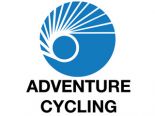 This 2010 document from Adventure Cycling provides an state-by-state overview of rumble strip policies.
This 2010 document from Adventure Cycling provides an state-by-state overview of rumble strip policies.
State Rumble Strip Policy Issues (PDF)
Bicycling and Rumble Strips Report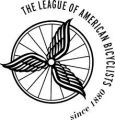 This 2010 report from the League of American Bicyclists and the Alliance for Biking & Walking outlines the issues and developments surrounding rumble strips.
This 2010 report from the League of American Bicyclists and the Alliance for Biking & Walking outlines the issues and developments surrounding rumble strips.
Bicycling and Rumble Strips Report (PDF)
State-Wide Rumble Strip Projects: Lessons Learned This report provides advocates an overview of how to find out about rumble strip projects in their state and how to address their concerns with officials from their Department of Transportation. (PDF, 152KB)
This report provides advocates an overview of how to find out about rumble strip projects in their state and how to address their concerns with officials from their Department of Transportation. (PDF, 152KB)
Download the report (PDF)
Traffic Calming / Road Diets
Traffic Calming for Communities Website![]() A website on Traffic Calming by the Institute of Traffic Engineers which includes examples of traffic calming measures, discussions, and selected reports.
A website on Traffic Calming by the Institute of Traffic Engineers which includes examples of traffic calming measures, discussions, and selected reports.
Traffic Calming for Communities Website (URL)
Traffic Calming: State of the Practice Report![]() This Institute of Transportation Engineers & Federal Highway Administration report from 1999 contains a synthesis of traffic calming experiences to date in the United States and Canada. The intended audience is transportation professionals.
This Institute of Transportation Engineers & Federal Highway Administration report from 1999 contains a synthesis of traffic calming experiences to date in the United States and Canada. The intended audience is transportation professionals.
Traffic Calming: State of the Practice Report (URL)
TrafficCalming.org This site from Fehr & Peers serves as a practical guide to traffic calming and neighborhood traffic management. Fehr & Peers.
This site from Fehr & Peers serves as a practical guide to traffic calming and neighborhood traffic management. Fehr & Peers.
TrafficCalming.org (URL)
Neighborhood Traffic Calming Program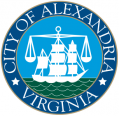 The brochure, program guide, and map from the the City of Arlington, Virginia, outlining their Neighborhood Traffic Calming Program.
The brochure, program guide, and map from the the City of Arlington, Virginia, outlining their Neighborhood Traffic Calming Program.
Neighborhood Traffic Calming Program Guide (PDF)
Neighborhood Traffic Calming Brochure (PDF)
Neighborhood Traffic Calming Map (PDF)
Going on a Road Diet This article from the Federal Highway Administration (FWHA) explores the safety and quality-of-life implications of a road diet—an approach that involves narrowing or eliminating travel lanes or shoulders to provide more space for bicyclists and pedestrians.
This article from the Federal Highway Administration (FWHA) explores the safety and quality-of-life implications of a road diet—an approach that involves narrowing or eliminating travel lanes or shoulders to provide more space for bicyclists and pedestrians.
Going on a Road Diet (URL)
Streets For People: Your Guide to Winning Safer and Quieter Streets
 In 2004, Transportation Alternatives released Streets for People, a how-to manual for people to use to bring Traffic Calming to their neighborhood.
In 2004, Transportation Alternatives released Streets for People, a how-to manual for people to use to bring Traffic Calming to their neighborhood.
Streets For People: Your Guide to Winning Safer and Quieter Streets (PDF)


